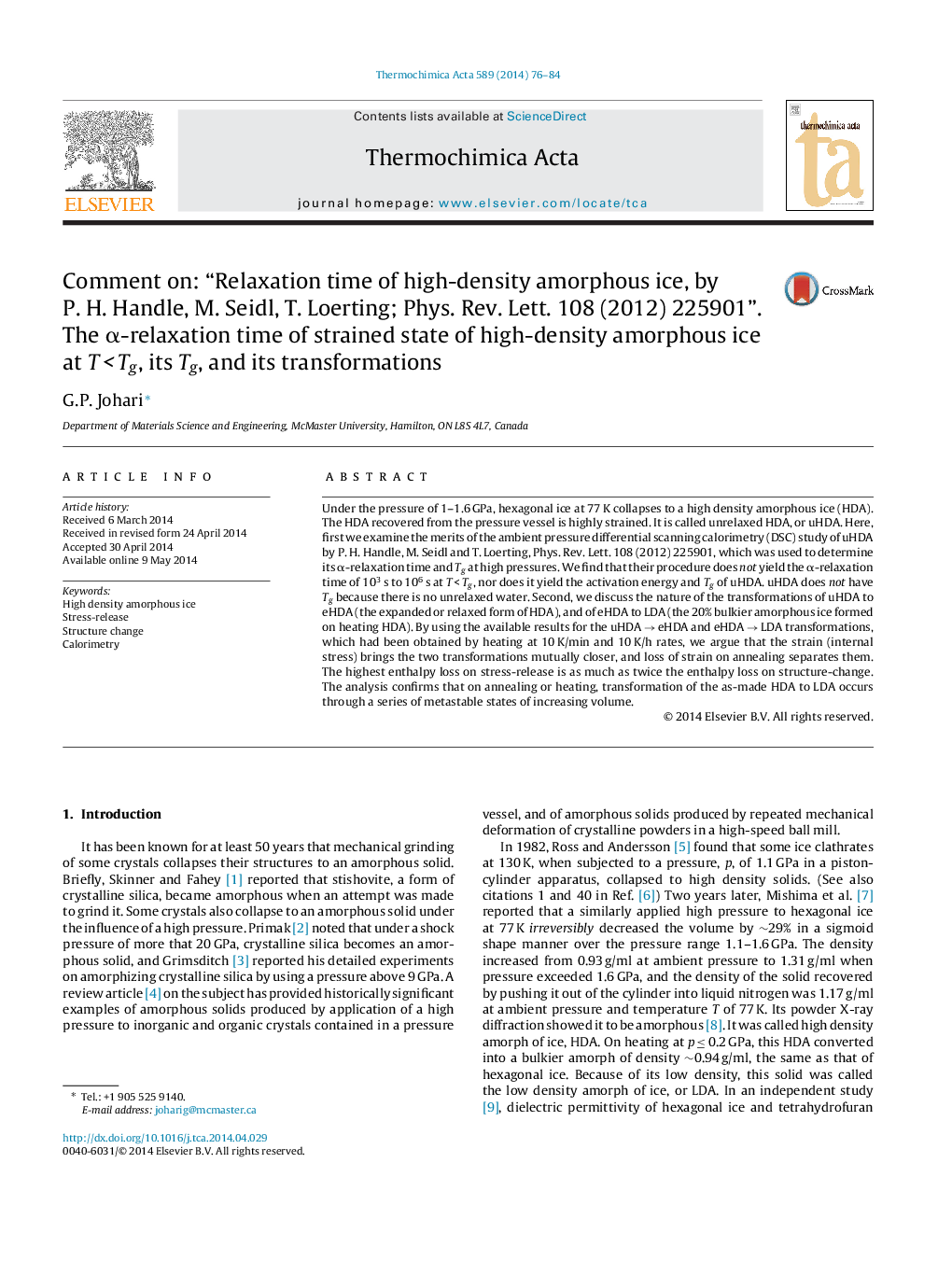| کد مقاله | کد نشریه | سال انتشار | مقاله انگلیسی | نسخه تمام متن |
|---|---|---|---|---|
| 673295 | 1459495 | 2014 | 9 صفحه PDF | دانلود رایگان |

• Calorimetry of a strained solid does not yield the relaxation time or Tg.
• Strain (stress) in an amorphous solid increases the rate of its structure-change.
• Internally stressed high density amorphous ice has no glass transition.
• Enthalpy of stress-release is comparable with the enthalpy of structure-change.
Under the pressure of 1–1.6 GPa, hexagonal ice at 77 K collapses to a high density amorphous ice (HDA). The HDA recovered from the pressure vessel is highly strained. It is called unrelaxed HDA, or uHDA. Here, first we examine the merits of the ambient pressure differential scanning calorimetry (DSC) study of uHDA by P. H. Handle, M. Seidl and T. Loerting, Phys. Rev. Lett. 108 (2012) 225901, which was used to determine its α-relaxation time and Tg at high pressures. We find that their procedure does not yield the α-relaxation time of 103 s to 106 s at T < Tg, nor does it yield the activation energy and Tg of uHDA. uHDA does not have Tg because there is no unrelaxed water. Second, we discuss the nature of the transformations of uHDA to eHDA (the expanded or relaxed form of HDA), and of eHDA to LDA (the 20% bulkier amorphous ice formed on heating HDA). By using the available results for the uHDA → eHDA and eHDA → LDA transformations, which had been obtained by heating at 10 K/min and 10 K/h rates, we argue that the strain (internal stress) brings the two transformations mutually closer, and loss of strain on annealing separates them. The highest enthalpy loss on stress-release is as much as twice the enthalpy loss on structure-change. The analysis confirms that on annealing or heating, transformation of the as-made HDA to LDA occurs through a series of metastable states of increasing volume.
Journal: Thermochimica Acta - Volume 589, 10 August 2014, Pages 76–84